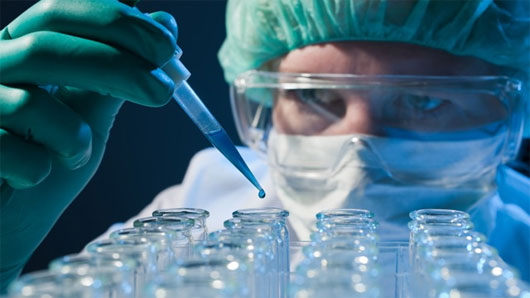Removing billions of space tourism: Customers must also drink recycled urine
Normally, everyone thinks that urine is the discarded waste of humans. However, the handling of this material in the direction of leaving in the air seems to be unreasonable.
First urine contains water, so it can be used (of course after the regeneration process) as a drink. One more reason: To bring a kilogram from the ground to earth orbit, people will have to spend up to $ 33,000. So the idea of turning waste water into drinking water for the astronauts and travelers on the international space station ISS was born.
Experts working on ISS can still get everything they need from Earth. But people who spend money on space travel in the future, possibly to Mars or some planet, will be forced to reuse urine and other liquids. It is not surprising that urine will be the source of water in manned spacecraft. Each astronaut emits about 1.5 liters of urine per day and this water accounts for 81% of the wastewater on the ship.

With the advancement in science, urine will become a pure drinking water source
Currently, astronauts and travelers reuse used liquids, to get clean water. Urine treatment can produce 75% of pure water, and it is expected that this rate can be up to 85-100%.
Nicolau and his colleagues developed a new technology that takes advantage of urine to increase the efficiency of using wastewater on spacecraft. In the first stage, engineers use permeability filtering technology - a process in which waste flows through a special filter that separates water from organic compounds, such as urea and dissolved molecules. other tiny.
Subsequently, the separated substances will be flushed directly into a microbial container, containing activated carbon and urease - an enzyme that helps to break down urea in urine. At laboratory tests, scientists were able to convert 86% of urea into ammonia solution.
At the final stage, the solution will be collected and transferred to a set of fuels, which helps to extract this ammonia into water and nitrogen, capable of generating electricity. At the present time, the experiment shows impressive results: It can generate a voltage of 0.2 voltage and 2 milliampere current.
The only thing that makes researchers difficult is the low concentration of urea in the urine. They are thinking of ways to overcome these problems to turn 'water' into fuel.
- Astronauts use recycled urine
- Urine is good for the health drink?
- Why is urine yellow?
- Russia still has no rival in space tourism
- How to go to the toilet?
- See your urine to see if you are fine or weak
- Russian restoration of space tourism
- New discoveries about use
- 13 surprisingly interesting things about urine
- Using urine to create electricity, by the way, clean up all germs in the urine
- Diagnosis of the disease through urine
- Opaque urine: Causes, diagnosis and treatment
 Van Allen's belt and evidence that the Apollo 11 mission to the Moon was myth
Van Allen's belt and evidence that the Apollo 11 mission to the Moon was myth The levels of civilization in the universe (Kardashev scale)
The levels of civilization in the universe (Kardashev scale) Today Mars, the sun and the Earth are aligned
Today Mars, the sun and the Earth are aligned The Amazon owner announced a secret plan to build a space base for thousands of people
The Amazon owner announced a secret plan to build a space base for thousands of people